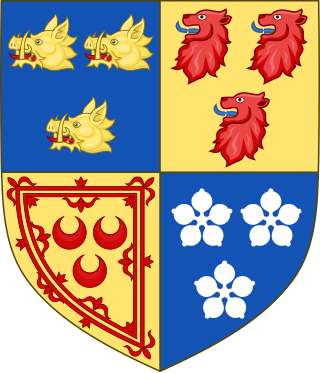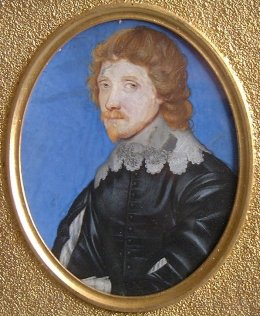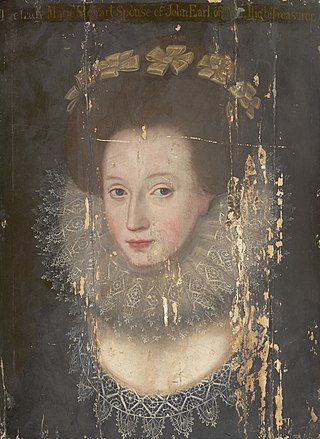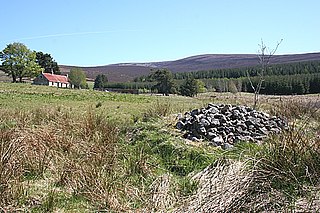Related Research Articles

George Gordon, 1st Marquess of Huntly was a Scottish nobleman who took a leading role in the political and military life of Scotland in the late 16th century, and around the time of the Union of the Crowns.
John Ingram was an English Jesuit and martyr from Stoke Edith, Herefordshire, who was executed in Gateshead on 26 July 1594, during the reign of Elizabeth I.

The Battle of Glenlivet was a Scottish clan battle fought on 3 October 1594 near Glenlivet, Moray, Scotland. It was fought between Protestant forces loyal to King James VI of Scotland who were commanded by Archibald Campbell, 7th Earl of Argyll, against Catholic forces who were commanded by George Gordon, 6th Earl of Huntly, and Francis Hay, 9th Earl of Erroll. The Catholics won a decisive victory in the battle, but in the aftermath were subdued by King James.

Clan Lindsay is a Scottish clan of the Scottish Lowlands.
Alexander Home, 1st Earl of Home and 6th Lord Home, was a Scottish nobleman and Lord Warden-general of all the March. He succeeded as the 6th Lord Home, a Lord of Parliament in the Peerage of Scotland, in 1575, and he was created Earl of Home in the Peerage of Scotland in 1605.
John Lindsay of Balcarres (1552–1598) was Secretary of State, Scotland. On 5 July 1581 he was appointed a Lord of Session under the title Lord Menmuir.
David Lindsay (1531–1613) was one of the twelve original ministers nominated to the "chief places in Scotland" in 1560. In 1589 as one of the recognised leaders of the Kirk and as chaplain of James VI of Scotland, Lindsay accompanied James to Norway to fetch home his bride. He was appointed bishop of Ross and a privy councillor in 1600. He was five times Moderator of the General Assembly: 1577, 1582, 1586, 1593 and 1597.
David Lindsay, 12th Earl of Crawford (1577–1620) was a Scottish nobleman.

John Leslie, 6th Earl of Rothes was a Scottish nobleman, one of the main leaders of the Covenanters.
Sir Thomas Lyon, Master of Glamis was a Scottish nobleman and official, Lord High Treasurer of Scotland.
David Lindsay, 11th Earl of Crawford (1547?–1607) was a Scottish nobleman and privy councilor.
Sir David Lindsay of Edzell, Lord Edzell (1551?–1610) was a Scottish judge.

Alexander Lindsay, 1st Lord Spynie was a Scottish nobleman. His death is the subject of the ballad Lord Spynie.

Marie Stewart, Countess of Mar (1576-1644) was a Scottish courtier. She was the daughter of Esmé Stewart, 1st Duke of Lennox and Catherine de Balsac d’Entragues (d. c.1631) and a favourite of James VI of Scotland. After her marriage, as was customary in Scotland, she did not change her name, and signed her letters as "Marie Stewart".
Henry Lindsay, 13th Earl of Crawford also known as Harry Charteris, was a Scottish landowner and courtier.
James Lindsay, 7th Lord Lindsay PC, Scottish landowner who was a gentleman of King James's bedchamber.

James Scott of Balwearie was a Scottish landowner and supporter of the rebel earls.

Patrick Gordon of Auchindoun (1538–1594) was a Scottish landowner and rebel.
Katherine Campbell, Countess of Crawford born Katherine Campbell was a Scottish noblewoman. She married twice and controlled a substantial inheritance.

Sir James (de) Lindsay, 9th Lord of Crawford, Knight Banneret, Lord of Crawford, Kirkmichael, Wigton, Symontoun, and of many other baronies, claiming also to be Lord of Buchan, was a Scottish feudal lord.
References
- Butler, Alban; Burns, Paul (1995). Butler's Lives of the Saints. Continuum. p. 209. ISBN 978-0-86012-256-2.
- Attribution
![]() This article incorporates text from a publication now in the public domain : Henderson, Thomas Finlayson (1893). "Lindsay, Walter". In Lee, Sidney (ed.). Dictionary of National Biography . Vol. 33. London: Smith, Elder & Co. pp. 314–315.
This article incorporates text from a publication now in the public domain : Henderson, Thomas Finlayson (1893). "Lindsay, Walter". In Lee, Sidney (ed.). Dictionary of National Biography . Vol. 33. London: Smith, Elder & Co. pp. 314–315.